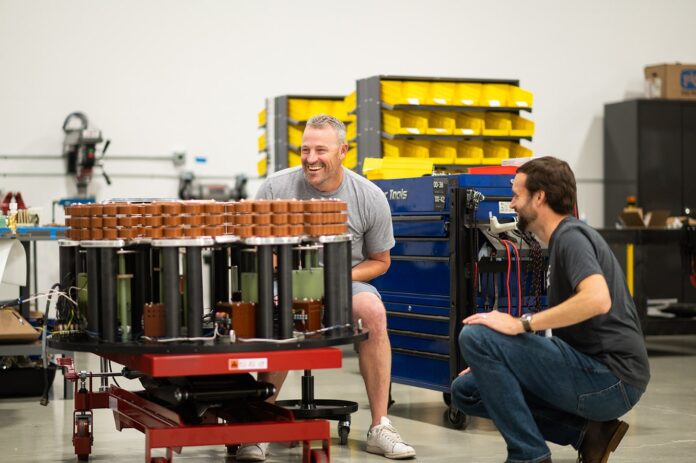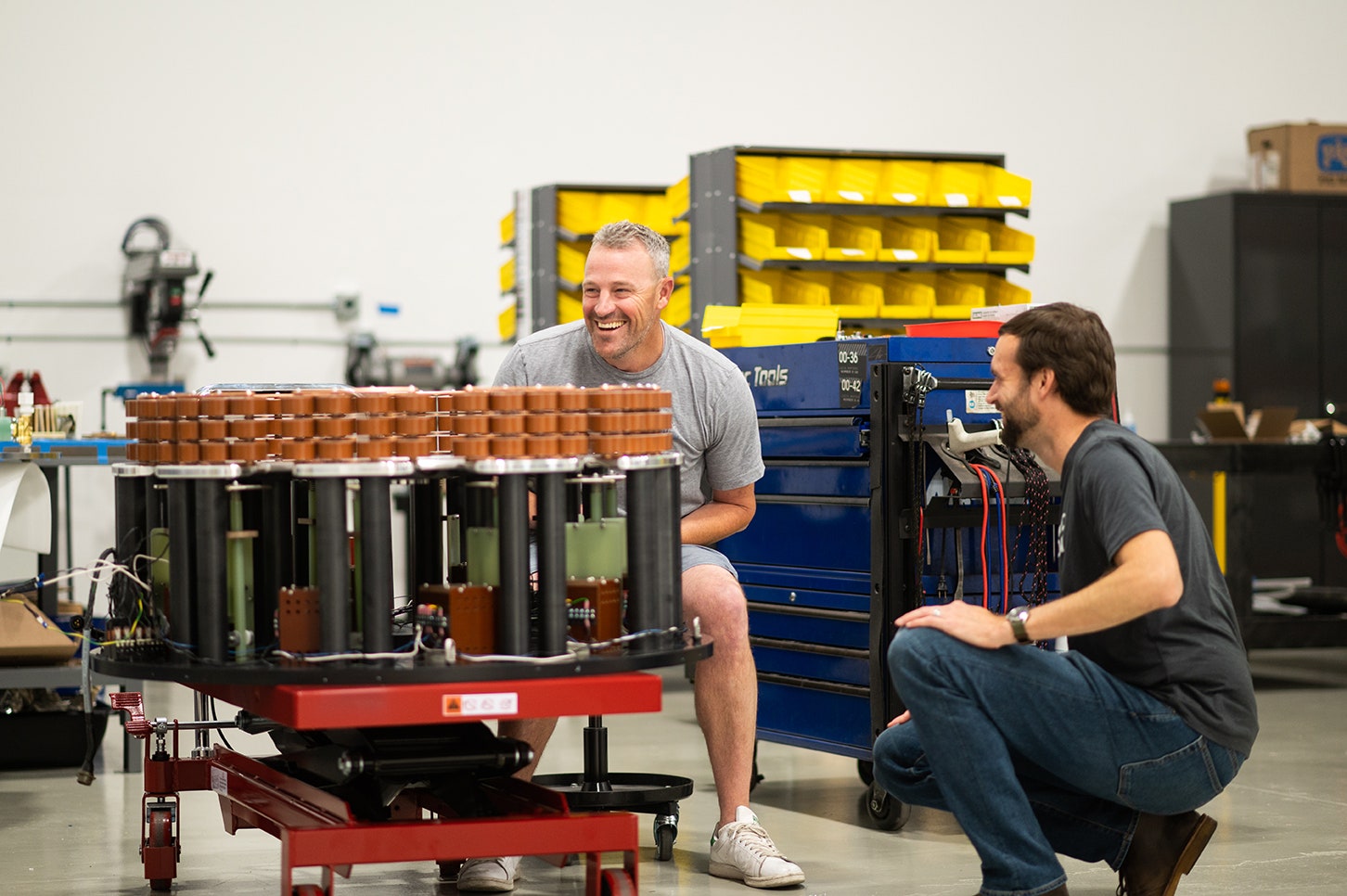Eric Lander is a Big Science heavyweight. A geneticist, molecular biologist, and mathematician, he led the International Human Genome Project and is founding director of the powerful Broad Institute of MIT and Harvard. His countless accolades include a MacArthur “genius” grant and 14 honorary doctorates. When Joe Biden became president, he tapped Lander to be his science adviser and the head of the Office of Science and Technology Policy. Lander lost the job because of charges that he bullied subordinates, but he went on to head a nonprofit organization called Science for America.
So what is he doing running a Silicon Valley startup that aims to solve the climate crisis by realizing the long-held dream of clean fusion energy? Lander is the founding CEO of newly announced Pacific Fusion, heading a team that includes top scientists from the national nuclear labs—Lawrence Livermore and Sandia—as well as experts in simulation and operations. It joins several dozen companies chasing a fusion dream that always seems to be 10 or 20 years out. And it still is—Pacific Fusion says it won’t deliver a working commercial fusion plant until well into the 2030s. But this time there’s a clear path to success. Or so says its famous CEO.
In May 2023, Science for America issued a report that flagged progress in fusion, citing recent breakthroughs. The year before, a Livermore group achieved what is known as “target gain,” producing significantly more energy than the amount required to perform the experiment. Soon after publishing the paper, Lander quietly formed a company with some scientists in the field, including some who worked at the labs and others from places like Alphabet’s X division and Tesla.
Sitting in a conference room at Pacific Fusion’s headquarters in Fremont, California, Lander explains to me why commercial fusion is finally within reach—and why Pacific Fusion may have the best chance to make it happen. He starts by giving me a primer on fusion, which happens when hydrogen is, in his word, “squished” into helium, releasing massive amounts of energy. It occurs naturally on the sun and other stars, but humans have yet to figure out how to do it efficiently here on Earth. But the potential payoff—unlimited clean power—has prompted around 50 startups to chase this dragon. Billionaires including Sam Altman and Bill Gates have backed one or another of these startups. Every few months, it seems, one of those contenders announces some breakthrough.
Why does Pacific Fusion say it’s different? The method it’s pursuing is called pulsed magnetic fusion, which involves inserting tiny containers of deuterium-tritium fuel into a chamber and blasting large electrical pulses through them to magnetically squeeze the fuel containers and achieve fusion. (It’s all explained here in a paper.) “It’s a very attractive approach that’s sort of been known for decades as an idea but has only just become feasible in the last two years because of this work in the national labs,” says Lander. His contention, which I will hear repeatedly as I meet with his team, is that we’ve now made all the scientific breakthroughs we need to understand how to use this technique to generate way more energy that it takes to build and run this system. The remaining challenges—hard ones to be sure— lie in engineering.
Another challenge is getting the money to build the prototypes for the hundreds of commercial plants that will theoretically solve the world’s energy woes. (And maybe cause global disruption when the current suppliers are upended, but that’s another story.) How do you fund a moonshot? Even when an investor accepts the risk, the prospect for payoff is distant: The Pacific Fusion timeline is to have a full-scale demonstration system sometime in the early 2030s, and commercial systems later in the decade.
Help came from venture capitalist Hemant Taneja of General Catalyst. He was introduced to Lander by former Google CEO Eric Schmidt, who has worked with Lander for years. Taneja proposed that investors commit a sum to be paid over time, with tranches released only if Pacific Fusion reaches certain milestones. “The team was a little skeptical at first,” he says of the Pacific Fusion people. “But it became clear that that structure resonated, because everybody takes early-stage risk in these really capital-intense, long-duration moonshots.” Taneja led a round of $900 million with participation from several other VC firms and Silicon Valley A-listers including Schmidt, Reid Hoffman, Patrick Collison, John Doerr, and Mustafa Suleyman. Collison, Schmidt, and Taneja will serve on the board.
Ultimately, the proof will come when the pulses hit the pellets. I got a look at some of the early machinery in my visit to Pacific Fusion’s facility in a nondescript office park. The entry space has a bunch of workstations and conference rooms with not a single piece of memorable furniture. The huge back room, however, looks like a mad scientist’s lair, with an 80-foot-long white tank, other tanks that look like giant washtubs, tons of glowing electronic equipment, and elaborate pipes and cabling. The tanks will hold what the team calls “bricks,” modules containing custom-made, 100,000-volt capacitors and a switch that, when turned on, discharges the energy within 150 nanoseconds. The bricks are designed to be mass-produced to drive down costs for power plants. Besides the physical testing, a lot of the development work is done in simulation; one cofounder, C. Leland Ellison, formerly did simulations at Livermore.
The energy of the team is so high it’s like they’ve been pulsed themselves. “At this moment, we are really close to the conditions needed to get net-positive energy,” says Keith LeChien, a former US Department of Energy scientist who is Pacific Fusion’s CTO. (I suspect that most of Pacific Fusion’s competitors would say the same thing.) But a long haul is ahead. Most startup jobs have a half life of a few years. (Look at OpenAI, where 9 of 11 founders are gone, well before an AGI bursts from its lab.) What strikes me is the long horizon. Even in the rosiest scenario, there will be thousands of days before we know whether Pacific Fusion—or any other fusion startup—can fulfill the promise. “For these next years, leading up to the early 2030s, the goal is to get, for the first time, a single pulse where you get more energy out than you put in,” says Will Regan, Pacific Fusion’s president and a Darpa veteran. “As we’re doing that, we’re looking at a lot of the commercial issues, like getting costs down.”
None of the people I spoke with admitted that they were intimidated by their mission’s epic length. “Personally, I just can’t think of a bigger, more exciting impact that we could have over the course of 10 years,” says COO Carrie von Muench, a former VC whose résumé includes doing strategy for X. “I would rather do this for the next decade than do three little things for the next chunks of years.”
It’s a risky bet. On the other hand, imagine if everything goes right. If there’s even a small chance that fusion energy pans out, it would be a giant win for the planet and its inhabitants—not to mention all those AI companies with their tremendous hunger for power to train and run their models. I wouldn’t begrudge the investors any of their huge payoffs. It might even bump that White House embarrassment from the eventual obituary of Eric Lander.
Time Travel
Last May I spoke with Lander’s successor at the Office of Science and Technology Policy, Arati Prabhakar. We talked more about AI than fusion, but I did get a chance to ask her about the challenges of running that office when so many people no longer trust experts.
Don’t you think there’s a hostility to science in much of the population?
People are more skeptical about everything. I do think that there has been a shift that is specific to some hot-button issues, like climate and vaccines or other infectious disease measures. Scientists want to explain more, but they should be humble. I don’t think it’s very effective to treat science as a religion. In year two of the pandemic, people kept saying that the guidance keeps changing, and all I could think was, “Of course the guidance is changing, our understanding is changing.” The moment called for a little humility from the research community rather than saying, “We’re the know-it-alls.”
Is it awkward to be in charge of science policy at a time when many people don’t believe in empiricism?
I don’t think it’s as extreme as that. People have always made choices not just based on hard facts but also on the factors in their lives and the network of thought that they are enmeshed in. We have to accept that people are complex.
Ask Me One Thing
Steve asks, “How do you feel about terms like “thought” and “reasoning” with respect to AI?”
Hi, Steve. Thanks for your curiosity about how I feel about these things. Let me start with the second term you mention. I think it’s perfectly appropriate to discuss reasoning when it comes to AI. One might debate whether a large language model is actually reasoning, as OpenAI claims its model o1 does. But the act of reasoning, which involves well-defined steps, seems to be something that humans or machines can engage in. We can criticize either for failing to engage in the practice.
Thought is another matter. Scientists haven’t come up with great explanations for how thoughts occur in our own brains, but they seem to be profoundly tied to consciousness. Even if LLMs—or even some version of artificial general intelligence—appear to come up with notions that seem to track with the human thought process, I doubt that they would be triggered the way they are inside our skulls. So, to answer your question, I don’t feel we should be talking about a computer’s “thoughts.” Maybe one day a truly conscious computer might convince me otherwise.
You can submit questions to mail@wired.com. Write ASK LEVY in the subject line.
End Times Chronicle
Thirty-six countries, including India, Brazil and South Africa, kissed Putin’s ring at the Bizzaro-NATO event, the BRICS summit.
Last but Not Least
Anthropic’s new AI model can run your computer. Bad news for the Geek Squad.
At least 50 bots on Telegram are offering to create non-consensual deepfake nudes with a few clicks. That’s the wrong kind of AI abundance.
A masked vigilante self-named ZachXBT is going after crypto scammers. The Lone Ranger of the blockchain!
Amazon explains why it took so long for a color Kindle.
Don’t miss future subscriber-only editions of this column. Subscribe to WIRED (50% off for Plaintext readers) today.
Source : Wired



















